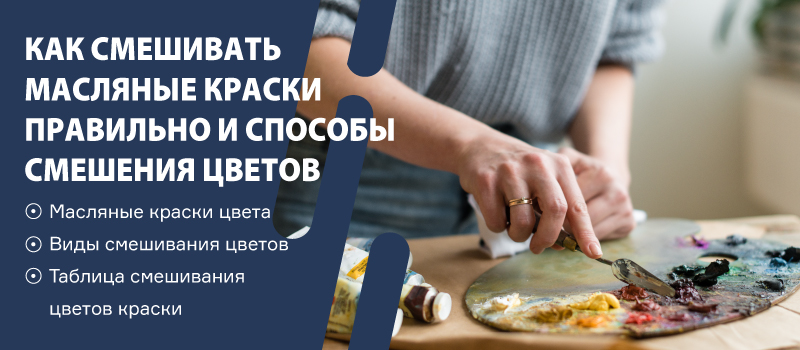
The concept of color in painting is quite extensive and is perceived much deeper than we are used to evaluating it in everyday life. Indeed, in addition to the fact that colors can be divided into different categories, the methods of mixing them are also different. Thanks to this, you can achieve various effects on the canvas that will make your painting truly unique and inimitable. This is especially true for oil painting, as it provides the artist with a wide range of techniques.
The types of colors, the principles of mixing them and the effects that can be achieved in this case will be discussed in our article.
Oil paint colors
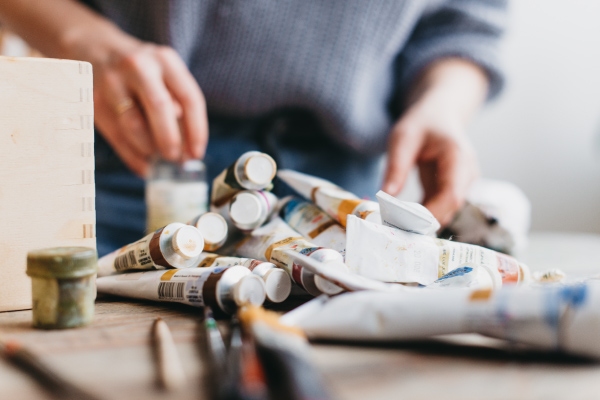
Let's start by getting to know the colors that oil paints provide us. Indeed, today various paint manufacturers offer a fairly extensive palette of colors. But are they all really necessary?
In fact, many shades and colors can be achieved by mixing paints yourself. But there are those that you certainly can't do without. They are called primary colors, which are impossible to achieve by mixing. These include blue, red and yellow. Armed with these three primary colors, you can create different shades of orange by mixing red and yellow in different proportions. Also, you can achieve different shades of green by mixing blue and yellow. And of course, by combining red with blue, you can achieve various purple hues.
If the resulting colors seem too dark, which often happens when mixing red with blue, a little white will correct the situation. Moreover, each resulting shade of a particular color can be lightened using whitewash. Thus, using only three primary colors and white, you can create a fairly wide palette of colors yourself.
The colors obtained as a result of such mixing are called secondary. Among them, there are already combinations that cannot be mixed, since they result in a dirty gray-brown color. These include pairs of colors located opposite the primary ones in the color wheel: blue and orange; red and green; purple and yellow. At the same time, these combinations look very impressive sitting side by side. They create the most striking contrasts together after black and white.
Methods of mixing colors
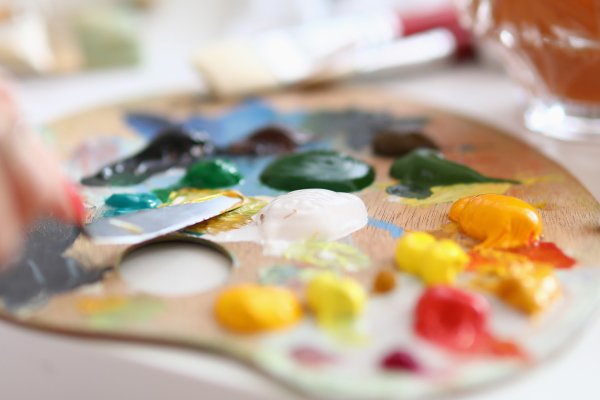
Mixing paints and mixing colors are not always the same. After mixing paints we mechanically mix them until a homogeneous mass is obtained. With colors, we have other options that do not involve mechanical mixing of the paint. At the same time, each type of color mixing creates a special effect on the canvas and is not interchangeable with other types.
Let's define what types of color mixing are and what is the peculiarity of each of them.
Mechanical mixing of colors — is the mixing of paints on the palette to obtain the desired color or shade. This type is the most common and helps the artist to feel the necessary proportions of colors to obtain the desired shades.
Optical (additive) color mixing — represents the intersection of different color rays and is most often used in the field of optical processes (image on a computer monitor, TV screen, gadget display). This method, in contrast to the mechanical one, has a slightly different palette of primary colors, namely: red, blue, green. With their help, you can create almost all shades of the visible spectrum. A kind of analogue of this type of color mixing in painting is the imposition of one paint on another, also known as the glaze technique. The bottom line is to apply a more transparent layer of paint over a dried smear of a different color. Thus, the effect obtained is different from mixing paints on a palette.
Spatial (subtractive) mixing of colors is formed when paints are placed very close, due to which they merge into one generalized color. Its essence lies in the fact that light rays are partially absorbed, reflected and refracted, falling on the surface of the object. Due to this, very closely spaced colors are perceived by our eye as a separate, intermediate between them color. This type of color mixing was especially widespread in the works of the impressionists and pointillism.
However, each of the methods of color mixing presented above has a place in the world of painting. After all, owning their principles, the artist significantly expands the possibilities and creates truly unique works of art. And to simplify the process, there are special color mixing tables that will help you save time and materials in finding the right shade. They will be discussed below.
Paint color mixing table
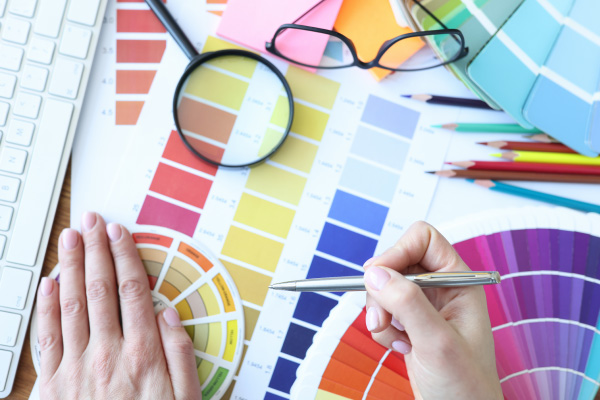
The process of mixing paints is, first of all, an experiment. Anyway, each artist will take time to understand and feel what, how and in what proportions must be mixed to obtain the desired color. But working with oil paints, you can turn to the special color mixing tables for help. They do not guarantee one hundred percent match of the shades, but they will definitely make the process of finding them easier.
Below we have presented the most popular color mixing combinations:
- Pink = White + some Red
- Chestnut = Red + Black / Brown
- Orange = Red + Yellow
- Green = Yellow + Blue
- Turquoise = Green + Blue
- Olive = Green + Yellow
- Gray = White + a little Black
- Mustard = Yellow + Red + Black + a little Green
- Beige = Brown + White + Yellow
- Lemon Yellow = Yellow + White + some Green
- Emerald Green = Yellow + Green + White
- Royal Magenta = Red + Blue + Yellow
- Plum = Red + White + Blue + Black
- Crimson = Blue + White + Red + Brown
- Eggshell = White + Yellow + a little Brown
Of course, this is not a complete list of all the options for mixing oil paints, but it can serve as a base for you on the way of learning all the intricacies of color mixing.
Video: How to get the color you want? Color circle
You can clearly consider the issue of mixing oil paints in the video, where the principle of mechanical mixing of basic colors is easily explained using the example of oil paints.
Summary
The world of colors and paints has certain basic elements, the combinations of which already lead to a further variety of the palette. Knowing the principles of color mixing helps the artist not only enrich his/her palette of colors, but also resort to various artistic techniques. Thus, the paintings become special, and the master has a certain unique style.
But no matter how familiar you are with the theory, it doesn't matter without practice. Only by feeling the colors and their features at work, you will learn how to easily combine and mix colors to get the desired result. And our article will allow you to always return to theory if you have any questions during the workflow.

The earliest work of Leonardo da Vinci
A small painted tile caused quite a stir among the scientists of the art world. This is because some scholars believe that the recently discovered work is Leonardo da Vinci's earliest known work
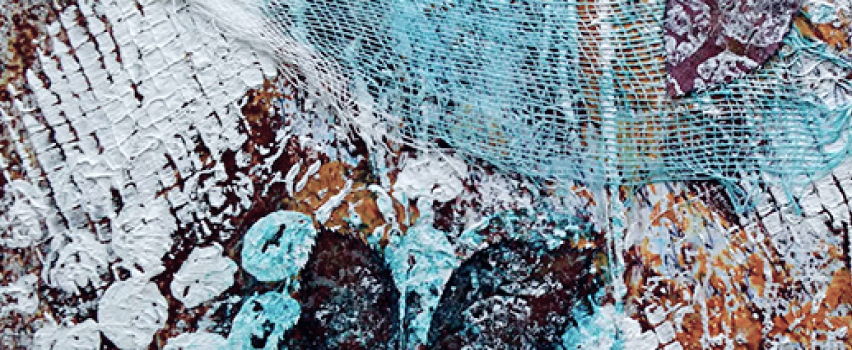
Interesting facts about painting
Paintings hold the secrets of the creator. Sometimes we manage to solve them, but many of them continue to be riddles, or simply stay unnoticed.












Thank you, your review has been sent successfully.
It will be posted on the site after moderation.